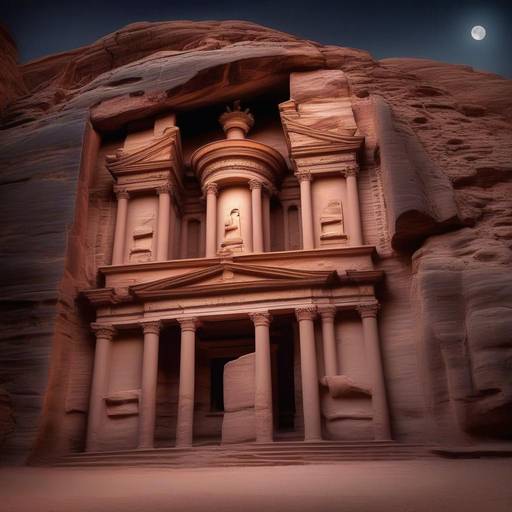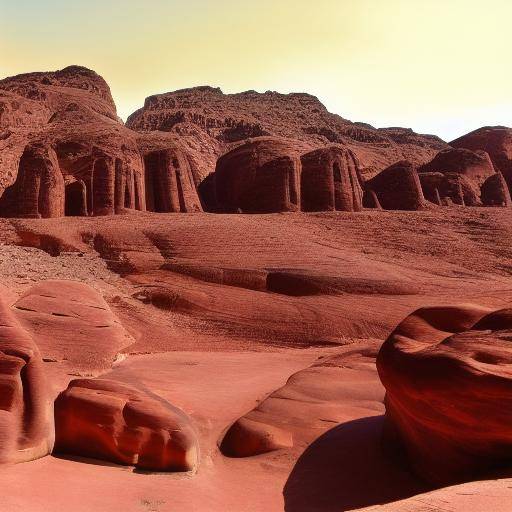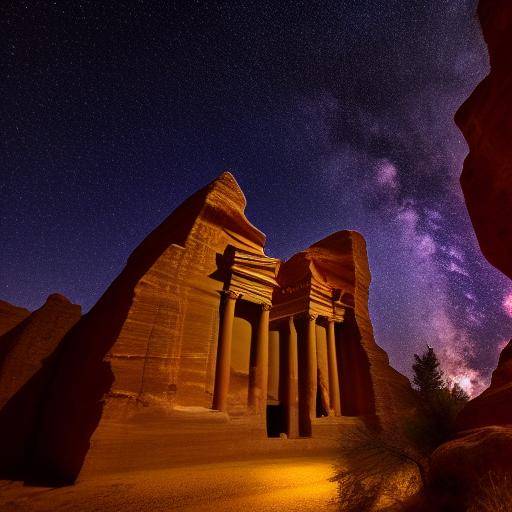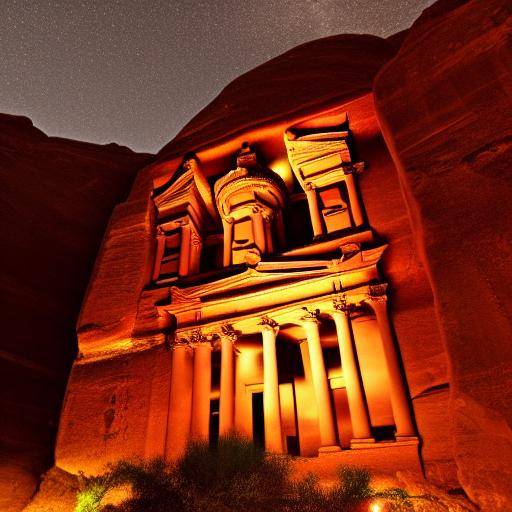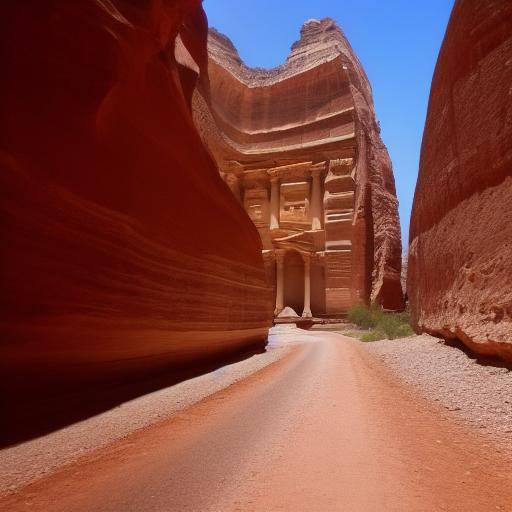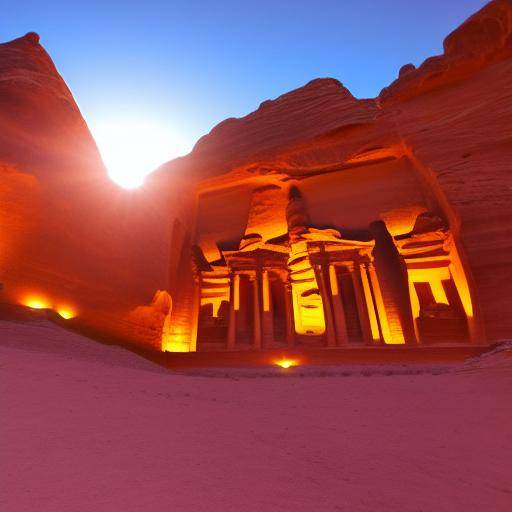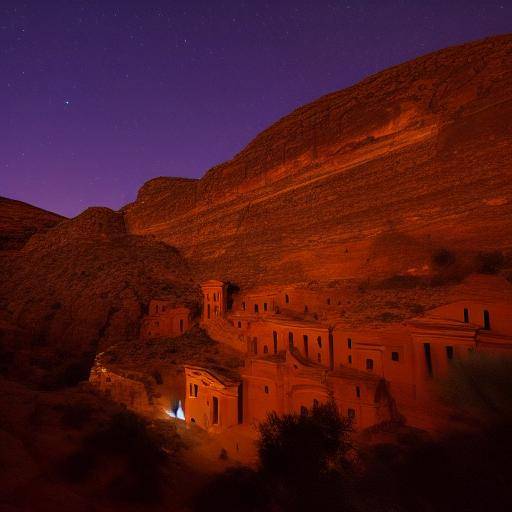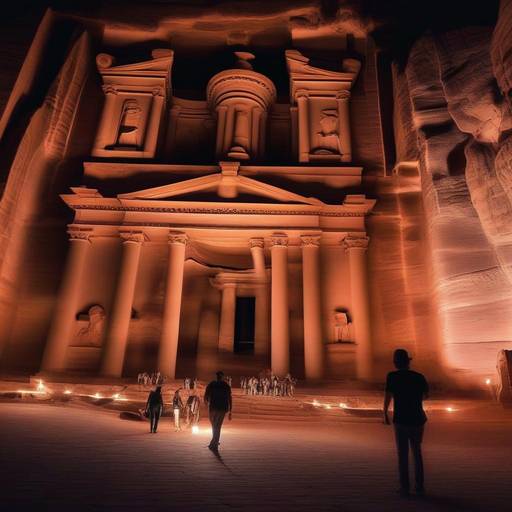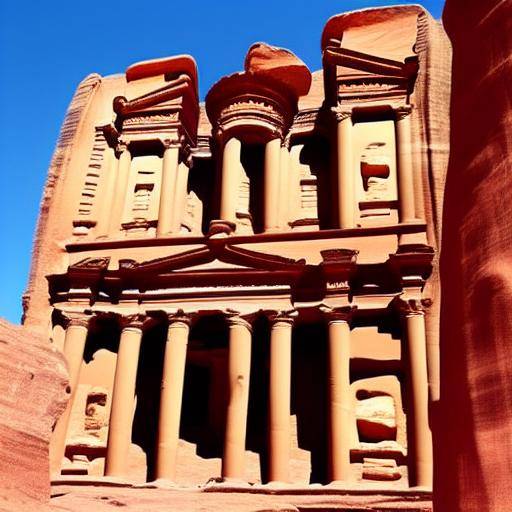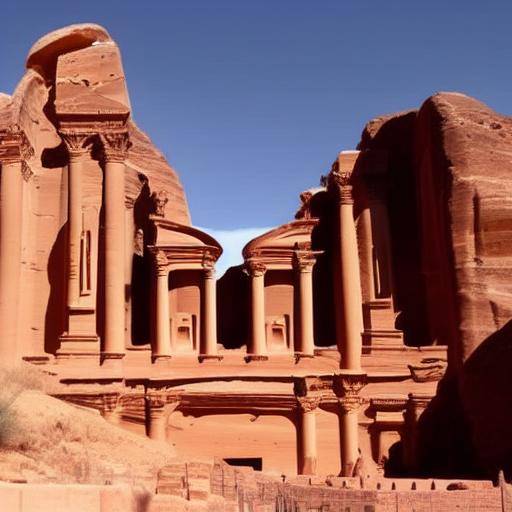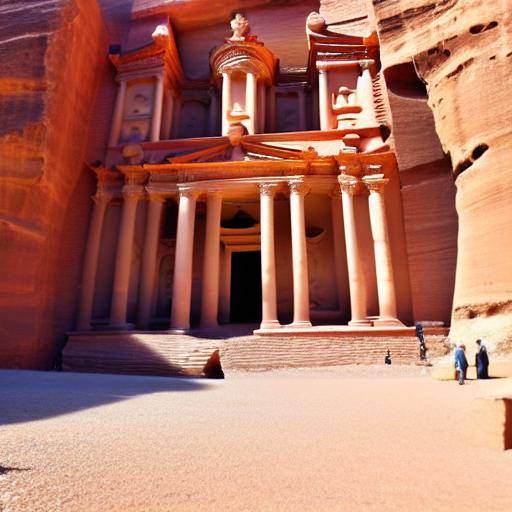
Petra, also known as the "Rose City", is an ancient archaeological enclave located in Jordan, famous for its fascinating structures sculpted in rock and its profound spiritual significance for ancient civilizations. This article aims to explore the rich history, spiritual meaning and connections with Petra's ancient religion, offering a deep and enriching view of this fascinating place.
Introduction: Exploring the Wonderful Petra
Petra, one of the wonders of the ancient world, evokes an aura of mystery and splendor that has captivated visitors and academics alike. With its majestic architecture carved in rock and its spiritual meaning rooted in ancient history, Petra stands as an archaeological gem that awakens the curiosity of those who seek to understand the lasting legacy of ancient civilizations.
In this article, we will embark on an exciting journey through the history and spiritual meaning of Petra, getting into their stone walls to unravel the mysteries that lie in the depths of this city carved in rock. From his humble origins to his apogee and his lasting legacy, we will discover the greatness of Petra and how his influence continues to resonate today. Go ahead and discover Petra's amazing past and its connection to ancient religion.
History and Background: Petra Origen
The history of Petra dates back to the ancient civilization of the Nabateans, more than two thousand years ago. Founded around the sixth century BC, Petra flourished as a prosperous shopping and cultural center, consolidating its position as one of the most impressive cities in the region. With its intricate tombs, temples and aqueduct systems carved on the pink rock, Petra became a dazzling testimony of the ingenuity and skill of the former builders.
Throughout its history, Petra experienced fluctuations in its influence and status, from its flourishing as a crucial commercial enclave to its gradual decline as the changing trade routes altered the fate of the city. However, its lasting legacy transcended the centuries, preserving its majesty and its secrets among the imposing rock formations.
Analysis in Deep: Spiritual Meaning and Ancient Religion in Petra
The spiritual meaning of Petra is intertwined with the religious beliefs of the Nebatians and the cultural influences that shaped their worldview. The vast structures carved in the rock served as temples and ritual spaces, where ancestral ceremonies were practiced and the deities venerated by the inhabitants of Petra were honored. This symbiosis between the earthly and the spiritual reveals the importance of Petra as a ceremonial and religious centre, where the transcendental and the earthly intertwine in a monumental expression of belief and devotion.
The ancient religion that prospered in Petra reflects a syncretism of cultural influences and beliefs, which intertwined to shape a unique spiritual landscape. This crucible of religious and ritual practices reverberates in the carved caverns and the venerated shrines, evoking a sense of deep connection with the transcendental that lasts today.
Comprehensive Review: Contemporary Applications and Future Outlook
Despite its antiquity, Petra's legacy transcends the archaeological sphere to resonate in the present, arousing a lasting fascination and renewed interest in its spiritual significance. The preservation and promotion of Petra as a site of cultural and spiritual importance offers opportunities for contemporary reflection on the relevance of old religious practices and suimpact in modern society. Petra's assessment as a historical and spiritual treasure offers a vivid testimony of heritage and connection to the ancient past, fueling an enriching dialogue on the relevance of old beliefs in the contemporary world.
Comparative Analysis: Petra, Jordan and Ancient Religion
In exploring the interconnection between Petra, Jordan and the ancient religion, an intertwined narrative that transcends geographical and temporal boundaries is revealed. Jordan, as guardian of Petra, is home to a cultural and spiritual wealth that nourishes itself from the legendary city carved in rock. The influence of ancient religion extends beyond the physical limits of Petra, permeating Jordan's cultural and spiritual identity with a lasting legacy.
Practical Tips and Accessible Recommendations
For those who wish to explore the majesty of Petra and immerse themselves in their rich spiritual history, here are some practical tips:
- Respect and conservation: When visiting Petra, it is crucial to show respect for the cultural and natural heritage of the place, contributing to its preservation for future generations.
- Conscious exploration: When walking through the trails of Petra, it is recommended to wear comfortable shoes and stock with water to enjoy a comfortable and safe experience.
- Cultural immersion: Take the opportunity to participate in guided tours or activities that provide an enriching perspective on Petra's history and spiritual meaning.
Conclusions and FAQs
In short, Petra emerges as a monumental testimony of the greatness of human ingenuity and the spiritual meaning rooted in ancient history. His lasting legacy continues to inspire astonishment and reflection, transcending time and space to connect with the deepest roots of humanity.
FAQs:
**1. What is the best time to visit Petra?**The mild climate between March and May, as well as between September and November, offers ideal conditions for exploring Petra.
**2. How can I access Petra from Jordan?**The city of Al Ula is the ideal base of operations to visit Petra, offering accommodation options close to the archaeological site.
**3. What are the main attractions in Petra apart from the Treasury facade?**Excavations and trails leading to emblematic sites such as the Monastery and the Altar of Sacrifices promise an enriching experience.
**4. What is Petra's role in the history of primitive Christianity?**It is believed that Petra served as a refuge for the first Christian communities, with numerous religious structures reflecting this influence.
**5. Are there any restrictions on photographing inside Petra?**Photography is permitted in most areas of Petra, but restrictions must be respected in certain sacred sites.
**6. What is the best way to learn about Petra's history during a visit?**The hiring of a local guide can significantly enrich the experience, providing detailed information and unique perspectives.
In conclusion, Petra: history and spiritual meaning of the city carved in rock It immerses us in a fascinating journey through the mysteries and greatness of this archaeological jewel, inviting us to reflect on the eternal importance of its spiritual significance and its lasting influence in contemporary society.

